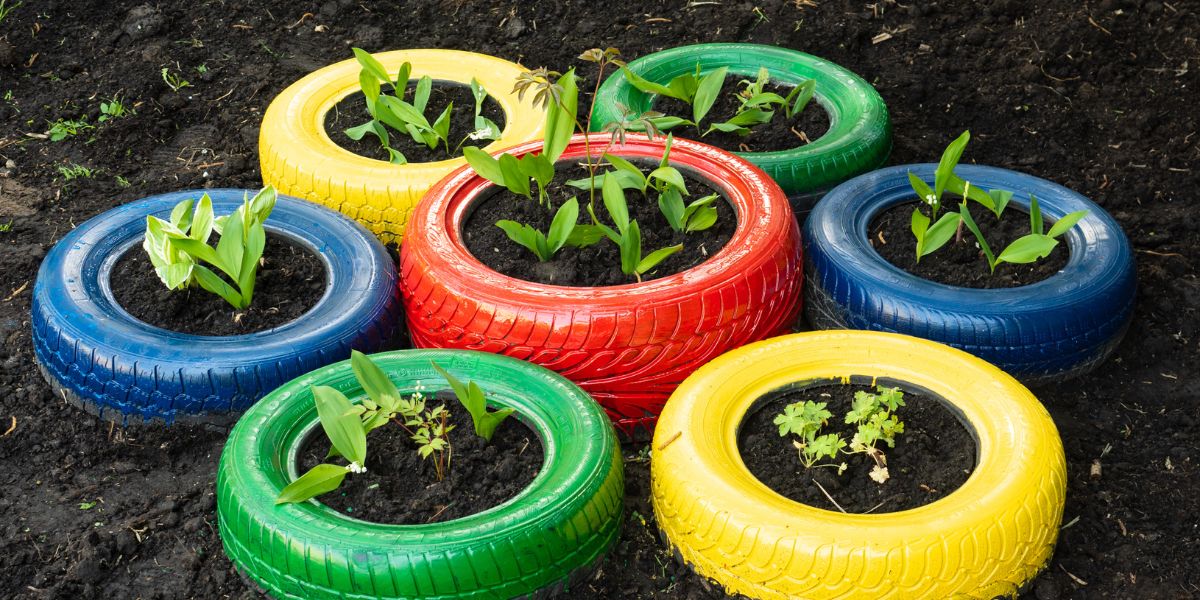Gardening is a productive way to grow food, improve outdoor spaces, and promote sustainability. It supports mental and physical well-being while reducing household expenses. With the right strategies, any space—small or large—can be turned into a productive garden.
This guide provides clear and simple gardening ideas for beginners and experienced gardeners alike.
Types of Gardens to Consider
Choosing the right type of garden depends on available space, climate, and purpose. Each method offers specific benefits.
Raised Bed Gardens
Raised beds improve soil drainage, reduce weed growth, and make planting easier. They are ideal for small spaces and allow for better soil control.
Container Gardens
Container gardening works well in patios, balconies, or rooftops. Pots, buckets, and planters can hold vegetables, herbs, or flowers. This method offers mobility and minimal soil preparation.
Vertical Gardens
Vertical gardening saves space and improves airflow. It involves growing plants on walls, trellises, or vertical stands. Suitable crops include tomatoes, peas, strawberries, and herbs.
In-Ground Gardens
This is the traditional method, where crops are planted directly in the soil. It supports larger yields and works best in rural or suburban areas with open land.
Gardening Ideas for Beginners
Starting a garden requires basic planning and a few essential materials. Simple ideas can lead to long-term success.
Start with Easy-to-Grow Plants
Choose plants that grow fast and need less care. Good options include:
- Lettuce
- Radishes
- Beans
- Tomatoes
- Basil
These plants tolerate beginner mistakes and deliver quick results.
Use Companion Planting
Some plants support each other when grown together. For example:
- Tomatoes grow well with basil and marigolds.
- Carrots benefit from growing next to onions.
- Beans improve soil nitrogen, which supports leafy greens.
Companion planting helps with pest control and nutrient sharing.
Improve Soil with Compost
Composting adds nutrients and improves soil structure. Use food scraps, dry leaves, and garden clippings to make compost. It reduces waste and boosts plant health.
Water Efficiently
Use a watering schedule based on plant needs and soil type. Early morning watering reduces evaporation. Drip irrigation and mulch help conserve water.
Rotate Crops Each Season
Changing plant locations each year prevents soil nutrient loss and reduces disease buildup. Rotate root crops, leafy vegetables, and fruiting plants for balance.
Creative Gardening Ideas for Small Spaces
Gardening can be successful in tight areas with the right techniques.
Use Hanging Baskets
Grow herbs, strawberries, or trailing flowers in baskets. They can be hung from porches, railings, or ceilings.
Repurpose Household Items
Use old buckets, crates, or broken pots as containers. This reduces waste and adds creativity to the garden.
Install Wall Planters
Attach planters to fences or walls to create green displays. Herbs, succulents, and small vegetables grow well in these structures.
Stack Planters Vertically
Use tiered shelves or stacking pots to grow more in less space. This method increases productivity in urban settings.
Seasonal Gardening Ideas
Adjust your gardening plans based on the season to keep your garden active year-round.
Spring
- Start seeds indoors for transplanting.
- Plant leafy greens and peas.
- Prune trees and shrubs.
Summer
- Grow heat-loving crops like tomatoes, cucumbers, and peppers.
- Harvest regularly to encourage new growth.
- Watch for pests and apply organic controls.
Autumn
- Plant root crops like carrots, garlic, and beets.
- Add mulch to protect soil from cold.
- Collect fallen leaves for compost.
Winter
- Use greenhouses or cold frames for year-round growth.
- Plan next year’s garden layout.
- Maintain tools and equipment.
Benefits of Implementing New Gardening Ideas
Incorporating smart gardening strategies offers measurable advantages:
- Increases crop yield in limited space.
- Reduces spending on store-bought produce.
- Improves soil health and plant resilience.
- Creates a cleaner, greener environment.
- Enhances personal well-being through outdoor activity.
These outcomes support both sustainability and food security at the household level.
FAQ: Gardening Ideas
What are the easiest plants to grow for beginners?
Lettuce, radishes, beans, and tomatoes are easy to grow and produce quick results.
How can I garden in a small space?
Use vertical gardens, hanging baskets, and containers. Choose compact plant varieties and optimize sunlight exposure.
What tools are essential for home gardening?
Basic tools include a trowel, gloves, watering can, hand rake, and pruning shears.
How often should I water my garden?
Water requirements depend on plant type, soil, and weather. Most gardens need water 2–3 times per week.
Can gardening reduce my grocery bills?
Yes. Growing vegetables and herbs at home lowers food expenses and improves access to fresh produce.
Conclusion
Gardening supports self-sufficiency and improves quality of life. Using practical gardening ideas, anyone can grow food, flowers, or herbs in any environment. Whether on a balcony or in a backyard, small actions like composting, companion planting, and vertical growing lead to big rewards.
Planning, seasonal care, and efficient water use help maintain a healthy and productive garden. With the right knowledge and tools, home gardening becomes a valuable and rewarding habit.

